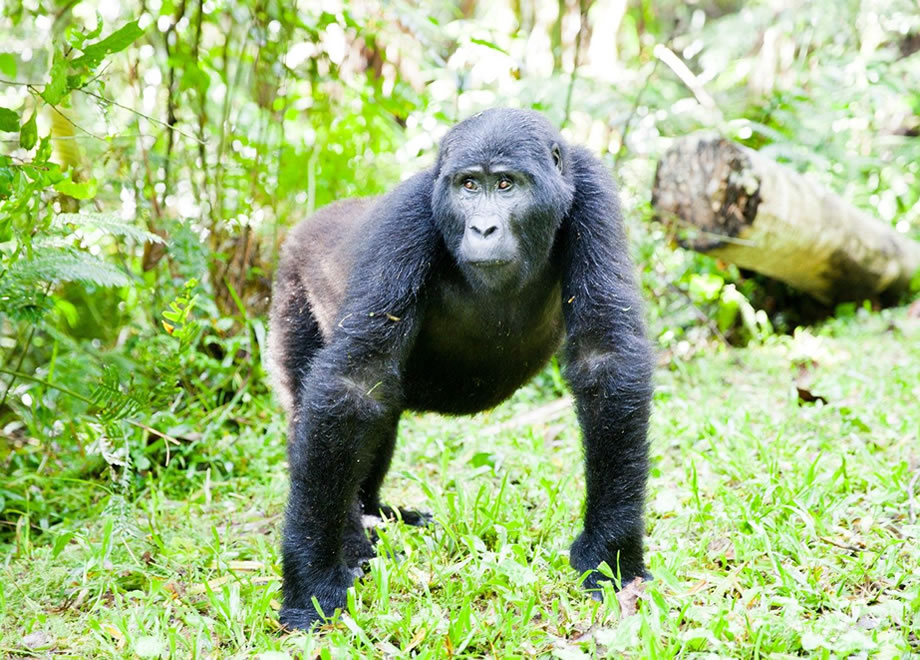There are several factors that pose threats to the lives of mountain gorillas and with only 1004 individuals that left on earth, they still remain endangered species. These majestic creatures thrive within the rain forest of Bwindi Impenetrable National Park and Mgahinga Gorilla National Park in southwestern Uganda; Volcanoes National Park in the Northern Province of Rwanda and the Virunga National Park in eastern DR Congo.
Spread of diseases
About 98% of mountain gorilla DNA is the same to that of humans which makes them not only our closest relatives in the wild but also very susceptible to human infectious diseases. Mountain gorillas like other wild creatures have their own diseases that they suffer from and adding human infections exposes them to higher risk of losing their lives. While in the wild, these apes live in families of about 35 to 50 individuals and in case they catch any human infections, it may not be easy for them to recover. Visitors on gorilla safari are always briefed on the set safety measures/guidelines also known as gorilla trekking etiquette that every trekker should observe while on a trek. Most importantly, visitors are not allowed to go to trek mountain gorillas in case he or she is sick/not feeling well. And in case of you are to sneeze, you are advised to cover your nose and the mouth when coughing.
Habitat loss
Habitat loss is one reason why mountain gorillas are endangered today. Most of the gorilla destinations are densely populated causing a lot of pressure on the habitat where these creatures thrive. Local communities adjacent these gorilla parks where gorilla safaris are conducted need land for them to farm and settle. In the long run, the habitat where these apes thrive decrease and they won’t have where to stay. Besides, mountain gorillas are vegetarians and clearing their habitat means, they won’t have what to feed on.
Poaching
Poaching still remains a major threat to the lives of mountain gorillas and in the first two decades after discovering these apes, about 50 of them were lost their lives. While poachers target specific creatures, these creatures also get trapped since they share the same habitat and where they cannot remove the wire snares, they can die or severely injured which leads to death. Others kill them due to need for their body parts that they use as traditional medicine or get them to use as pets.
Civil unrest
Civil war is one major threat to the lives of mountain gorillas in the wild. Not only does it destabilize their social behavior but they can also get catch in fire exchange. A case of the Virunga National Park in the eastern DR Congo, gorilla conservation still remains the biggest challenge. This also affects gorilla safaris in this protected area.
Oil and gas exploration
Oil and gas exploration are another factor that has posed threats towards the thriving of these creatures in the wild making them endangered. For instance, in the Virunga National Park-eastern DR Congo where oil exploration was launched which in one way does affect the survival and habitat of these creatures.
In summary, despite the significant increase in gorilla numbers, they remain endangered species on earth. This calls for more efforts to protect them from getting extinct in the wild. You can help save these mountain gorillas by booking a gorilla safari to Uganda, Rwanda or DR Congo. The earnings from your gorilla permit help in protecting the mountain gorillas in their natural home.

Leave a Reply